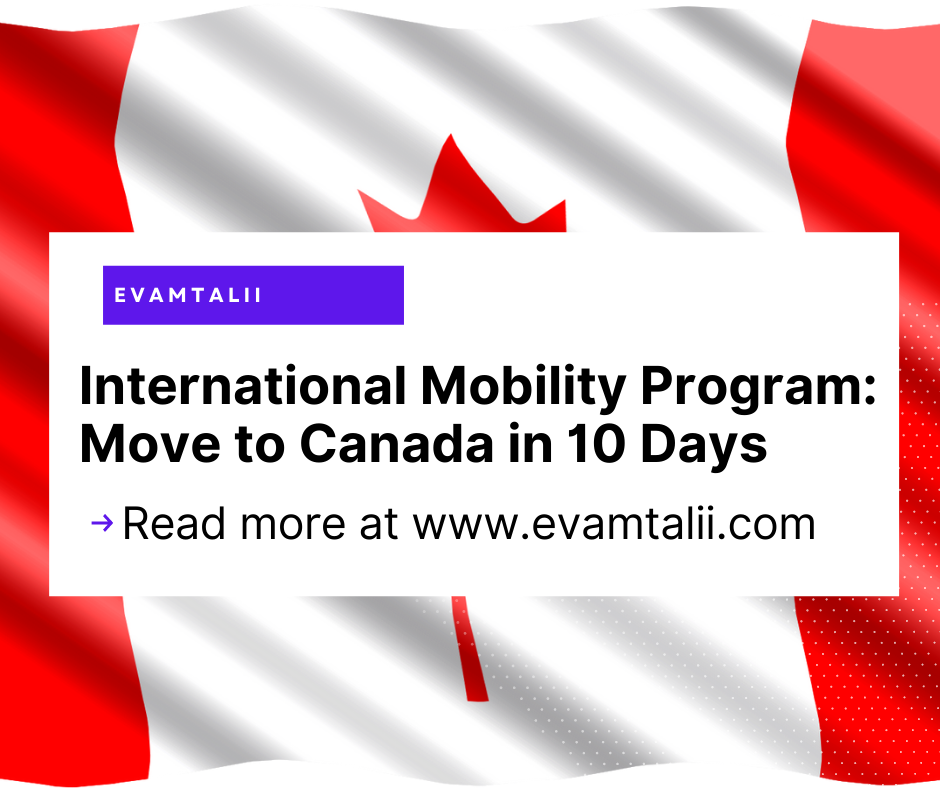Who qualifies for International Mobility Program?
What is the objective of the International Mobility Program?
How do I apply for IMP?
Who is eligible for LMIA exemption?
What is the fastest way to move to Canada?
These are some of the questions we are going to tackle in this article.
Canada’s work market has been severely strained in the recent past due to various reasons, such as, a declining rate of birth, a flourishing economy, and more youthful retirement age, leaving numerous jobs open in Canada.
Canada has accordingly looked beyond its borders for solutions to this prevailing labor market shortage.
What's Covered in This Article
What is the International Mobility Program (IMP)
The International Mobility Program (IMP) is one of such solutions adopted by Canada by hiring foreign workers to fill the open job positions, issuing them temporary employment opportunities at all skills levels.
Through the International Mobility Program (IMP), Canadian employers hire international workers on a temporary basis without having to first apply for a Labour Market Impact Assessment (LMIA) as long as the position serves Canada’s cultural and economic interests.
What is an LMIA?
An LMIA is a document that shows that a Canadian employer has need for a temporary foreign worker because no Canadian citizen (s) or Canadian permanent residents is (are) available to do the job.
Advantages of the IMP
- Faster processing times of 10 days and a much simpler application process (no LMIA), the International Mobility Program (IMP). This is in contrast for example to the Canada Temporary Foreign Worker Program, which requires an LMIA and is also labor market dependent.
- Successful International Mobility Program (IMP) applicants get a Canadian open work permit in 2 weeks which gives them eligibility to work for any employer in Canada.
- The IMP helps foreign workers qualify for permanent residence in Canada through the federal economic programs such as the Canadian experience class within Express Entry stream as well as through various provincial nominee programs (PNP).
International Mobility Program Streams
Though not exhaustive, Foreign Workers who are eligible for the International Mobility Program (IMP) include:
The International Experience Canada (IEC) program
Usually, to participate in International Experience Canada, a candidate must be a Canadian or foreign youth aged 18 to 35. For some countries, the age limit is 18 to 29 or 30 years old. Find out here if your country is eligible.
1. Those entering Canada as part of trade treaties such as:
- the United States-Mexico-Canada Agreement (USMCA),
- the Trans-Pacific Partnership,
- and the Canada–European Union Comprehensive Free Trade Agreement (CETA).
2. Those entering Canada on Intra-Company Transfer programs
Under the intra-company category program, international companies are eligible to temporarily transfer qualified foreign employees to Canada for the purpose of improving management effectiveness, expanding Canadian exports, and enhancing competitiveness in overseas markets.
3. Canada Post-Graduation Work Permit (PGWPP) applicants
The Canada Post-Graduation Work Permit Program (PGWPP) allows international graduates of eligible Canadian designated learning institutions (DLIs) to obtain an open work permit to gain skilled Canadian work experience in National Occupational Classification (NOC) skill type 0 or skill level A or B gained through the PGWPP which is very valuable when applying for Canada PR.
4. Those entering Canada under the Mobilité Francophone initiative
A Canadian immigration program to promote Francophone immigration in Francophone minority communities in Canada.
Through the Mobilité Francophone initiative, foreigners who are looking to work and/or settle in a Canadian province or territory outside Quebec and qualified under National Occupational Classification (NOC) 0, A or B may be eligible for an exemption from the Labour Market Impact Assessment (LMIA).
How to Apply for the International Mobility Program (IMP) Work Permit
Step 1: Get a Job Offer
Watch video below for a step by step process on how to get a valid job offer for the IMP as a temporary foreign worker.
How to apply for Temporary Worker Jobs in Canada from Your Country
If you already have an open work permit, your employer doesn’t have to submit a job offer nor pay the compliance fee.
Step 2: Employer makes an IMP job offer
- Employer makes an IMP job offer through the IRCC’s Employer Portal. The employer must first register a profile to use the Employer Portal. The Employer Portal lets employers submit offers of employment for temporary workers who don’t need a Labour Market Impact Assessment.
- Employer enters into the portal, details of the job being offered including a list of duties, the minimum education requirement, experience required, plus wages and benefits.
- If successful, the employers submitting a job offer receives an offer of employment number.
Step 3: Employee Completes Temporary Foreign Work Permit
- The foreign worker uses the offer of employment number from step 2 above to complete their work permit application.
- If the foreign worker is outside Canada and their temporary foreign work permit application is approved, the foreign worker receives a letter of introduction.
Step 4: Employee Gets IMP Temporary Foreign Work permit
- Foreign work exchanges the letter of introduction for a work permit at the port of entry, provided all the requirements are still met.
- If the foreign worker is already in Canada, or applying at the time of entry, and their work permit application is successful, they receive a new work permit.
Difference Between the Temporary Foreign Worker Program (TFWP) and the International Mobility Program (IMP)
Following is a simple comparison between the Temporary Foreign Worker Program and the International Mobility Program:
| Temporary Foreign Worker Program (TFWP) | International Mobility Program (IMP) |
| LMIA required, | No LMIA required. |
| Employer – specific work permit. | Open work permit. |
| Objective is to temporarily fill labor market shortages. | Objective is to advance Canada’s broader economic and cultural interests. |
| Based on specific labor shortages per occupation and/or region. | Partly based on international agreements e.g., IEC, NAFTA, CETA. |
| Streams applications based on the wage offered to foreign worker. | Doesn’t stream applications based on the wage offered to foreign worker |
| Typically, job must first be offered to Canadian citizens and permanent residence before opening to foreign workers. | Employers may hire without first opening up the position to Canadian citizens and permanent residence |
| Employer pays CAD $ 1,000 for LMIA application. | Employer pays CAD $ 230 compliance fee if worker doesn’t already have a work permit. |
| 10 day work permit processing time is only available for some occupations and top 10% wage earners. | 10-day standard work permit processing time available for most streams. |
| Overseen by Employment and Social Development Canada (ESDC). | Overseen by Immigration, Refugees, and Citizenship Canada (IRCC). |




